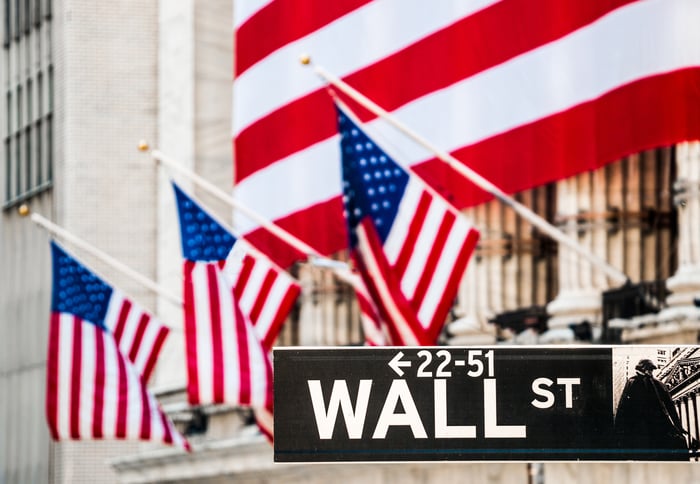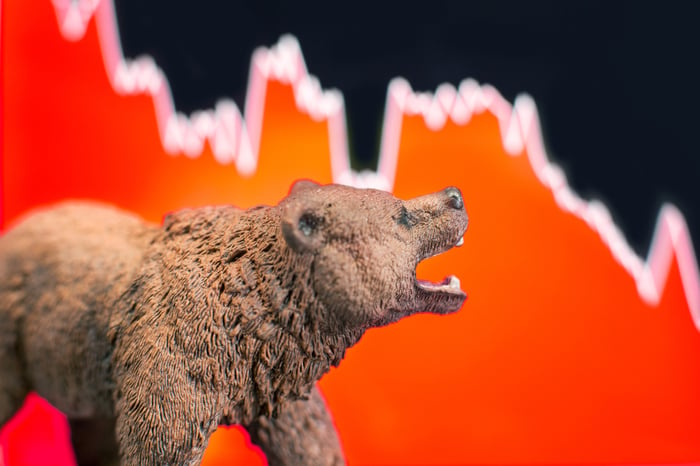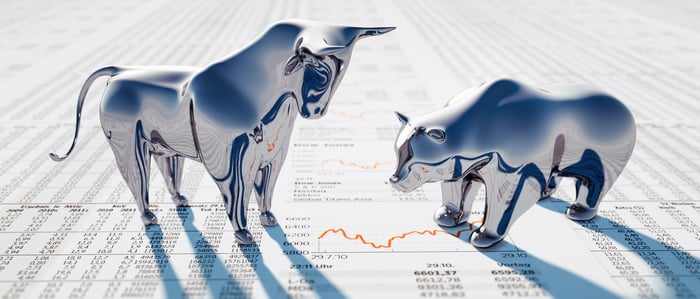Wall Street is rich with history. Its three most widely followed indexes -- the iconic Dow Jones Industrial Average (^DJI -5.50%), technology-driven Nasdaq Composite (^IXIC -5.82%), and broad-based S&P 500 (^GSPC -5.97%) -- have a respective 124 years, 49 years, and 63 years of history under their belts.
But when an unprecedented pandemic presents itself, stock market records are made to be broken. In the second quarter, we witnessed one of the worst single-quarter gross domestic product contractions ever, and saw the unemployment rate rise faster than at any point in history. Amid the coronavirus disease 2019 (COVID-19) pandemic chaos, we've watched the stock market make history on five separate occasions.

Image source: Getty Images.
1. The steepest and quickest bear market decline ever
Arguably the most defining characteristic of the coronavirus stock market crash is just how quickly it materialized. When news outlets throw around the word "plunge" or "crash," you can usually roll your eyes at the hyperbole. However, the coronavirus crash was the real deal. It took just 16 trading days for the Dow Jones to push into bear market territory at a 20% decline, with the benchmark S&P 500 and Nasdaq Composite one trading day behind.
On an aggregate basis, the S&P 500 lost a peak of 34% in only 33 calendar days thanks to the coronavirus panic. Compare that to the average bear market correction, which has historically taken at least 11 months to hit 30%. We've simply never seen such a steep and rapid bear market decline in the stock market's history.

Image source: Getty Images.
2. The highest volatility reading on record
The stock market's widely followed indexes were also tossed around like rag dolls on a day-to-day basis. The CBOE Volatility Index, also known as the VIX, measures 30-day forward-looking volatility via options. In March, it hit an all-time high of 85.47, eclipsing its previous record high set during the Great Recession.
Just how crazy has the market been? Since late February, the Dow Jones has registered 14 of its 17 largest single-session point declines, as well as eight of its nine biggest single-day point increases in its 124-year history. In many instances, these vacillations occurred in sequential trading sessions. For instance, in the eight trading days between March 9 and March 18, the Dow Jones Industrial Average gained or lost between 1,049 and 2,997 points. These dates represent eight of the 19 times in the Dow's storied history that it's had at least a 1,000-point (or higher) single-session move occur in a 1.5-week stretch.

Image source: Getty Images.
3. The first time crude oil futures contracts pushed into negative territory
We also witnessed history on April 20, when front-running crude oil futures contracts for West Texas Intermediate (WTI) turned negative. It's not as if WTI futures dipped a few cents into negative territory. Although the stay below $0 was relatively brief, WTI futures reached minus $40 per barrel before rebounding. Producers were effectively paying buyers to take the product off their hands.
How on Earth does this happen? The big-picture answer lies with the COVID-19 pandemic, which pushed oil demand lower by as much as 10 million barrels per day. With worldwide oil producers unable to respond quickly to this demand shift, supply grossly overwhelmed demand, causing prices to fall.
There were also unique circumstances to this crude futures inversion. Specifically, the front-month contract was set to expire in two days when it began to plummet. With global crude storage filling up well before April 20 due to pandemic-related declines in demand, there was real panic that contract holders wouldn't be able to take delivery and store their product. Thus, they sold at any price -- even negative ones -- to get out.

Image source: Getty Images.
4. The fastest recovery from a bear market bottom to new highs
There's been good news, too. Aside from enduring the steepest bear market drop in history, investors were also privy to the fastest recovery to new all-time highs. After bottoming on March 23, it took less than five months for the S&P 500 to rise to a fresh closing high. The Nasdaq Composite has done even better, with the index recording more than three dozen record closing highs in 2020.
Admittedly, it's a bit unclear why equities have been so strong in recent months. While it's common for the stock market to bottom well in advance of the U.S. economy hitting its trough, it's not as if economic activity is anywhere close to where it was prior to the pandemic. Though we've witnessed a few megacap stocks benefit from the work-from-home trend, most companies have seen their sales and/or profits take a hit from the COVID-19 pandemic.
What's important to note, though, is that bull market rallies have put each and every stock market correction and bear market in history into the rearview mirror. This is yet another reminder that buying into stock market corrections is almost always a smart idea for long-term investors.

Image source: Apple.
5. The first-ever $2 trillion public company in the U.S.
Lastly, we witnessed the first publicly traded company in the U.S. hit a $2 trillion market cap: Apple (AAPL -7.28%).
Apple was already doing well heading into late July. Its fiscal third-quarter earnings report showed surprising double-digit sale growth from the prior-year period, with services revenue leading the way during an especially difficult quarter for businesses. However, it was the company's announcement of a 4-for-1 stock split that appeared to create the euphoria that sent Apple to a market cap of $2.3 trillion before retreating.
Though Apple proved me wrong and was the first company to hit the $2 trillion mark, I firmly believe it'll cede way to Amazon, which I've pegged as the stock market's first $3 trillion company.




